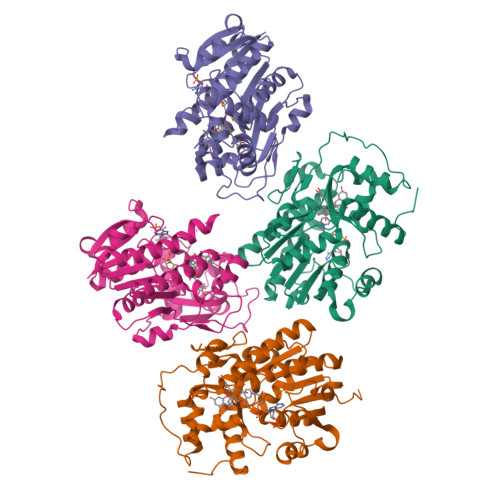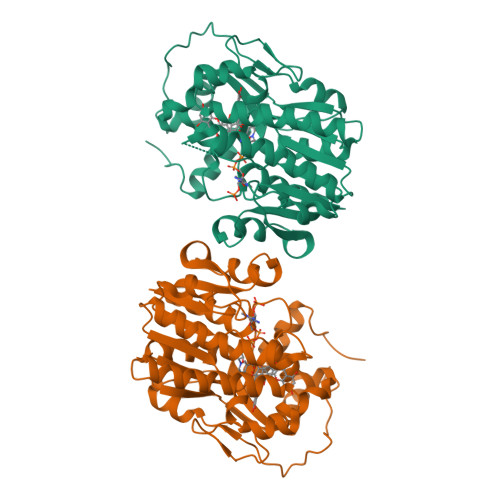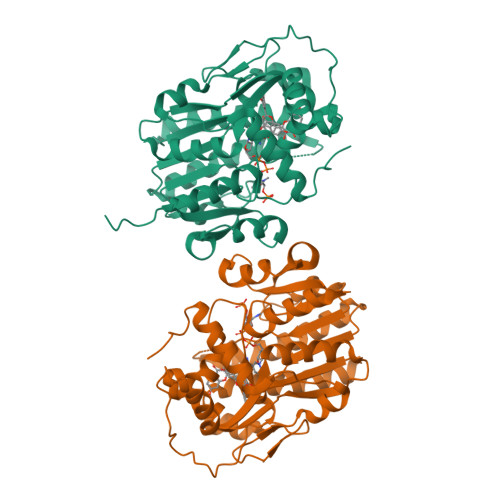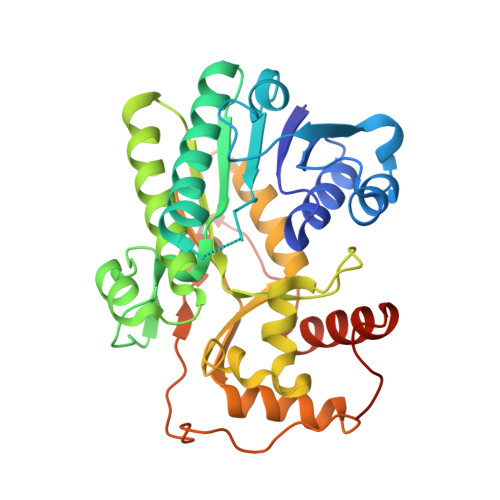Structural evidence for the inhibition of grape dihydroflavonol 4-reductase by flavonols
Trabelsi, N., Petit, P., Manigand, C., Langlois d'Estaintot, B., Granier, T., Chaudiere, J., Gallois, B.(2008) Acta Crystallogr D Biol Crystallogr D64: 883-891
- PubMed: 18645237
- DOI: https://doi.org/10.1107/S0907444908017769
- Primary Citation of Related Structures:
3BXX, 3C1T - PubMed Abstract:
Dihydroflavonol 4-reductase (DFR) is a key enzyme of the flavonoid biosynthesis pathway which catalyses the NADPH-dependent reduction of 2R,3R-trans-dihydroflavonols to leucoanthocyanidins. The latter are the precursors of anthocyans and condensed tannins, two major classes of phenolic compounds that strongly influence the organoleptic properties of wine. DFR has been investigated in many plant species, but little was known about its structural properties until the three-dimensional structure of the Vitis vinifera enzyme complexed with NADP(+) and its natural substrate dihydroquercetin (DHQ) was described. In the course of the study of substrate specificity, crystals of DFR-NADP(+)-flavonol (myricetin and quercetin) complexes were obtained. Their structures exhibit major changes with respect to that of the abortive DFR-NADP(+)-DHQ complex. Two flavonol molecules bind to the catalytic site in a stacking arrangement and alter its geometry, which becomes incompatible with enzymatic activity. The X-ray structures of both DFR-NADP(+)-myricetin and DFR-NADP(+)-quercetin are reported together with preliminary spectroscopic data. The results suggest that flavonols could be inhibitors of the activity of DFR towards dihydroflavonols.
- CBMN, UMR CNRS 5248, Bâtiment B8, Avenue des Facultés, Université Bordeaux 1, 33405 Talence CEDEX, France.
Organizational Affiliation:





















